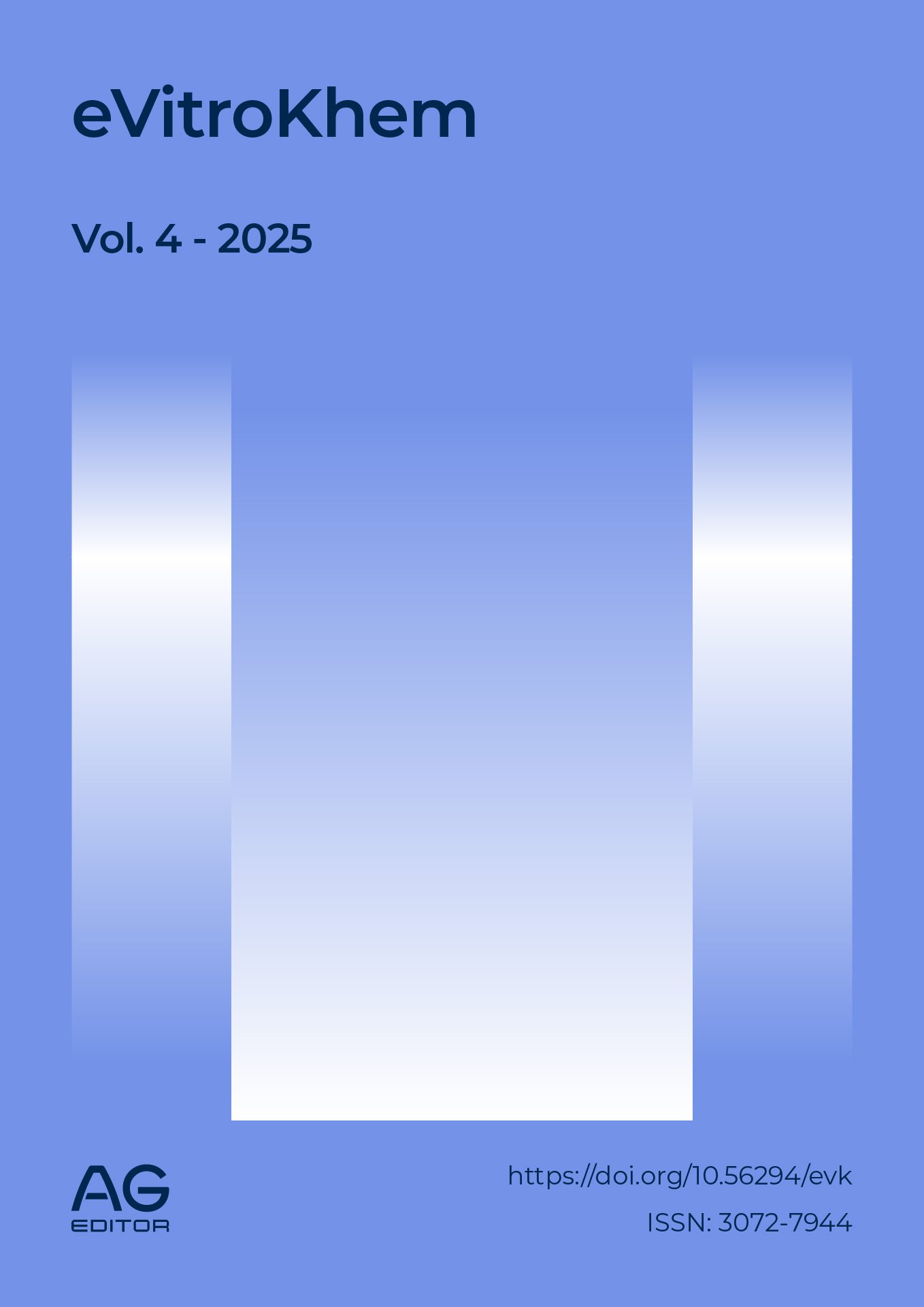QR Code-Based Ecoprint Catalog Digitalization as a Strategic Innovation for Sustainable MSME Development at Tembindigo
DOI:
https://doi.org/10.56294/evk2025290Keywords:
QR Codes, Ecoprint, digitalization, catalog, innovation, motifsAbstract
Introduction: New eco-friendly creative industries focus on sustainable innovations such as ecoprinting which transfers natural motifs from plants onto fabrics. However, many Micro, Small, and Medium Enterprises (MSMEs) still grapple with production consistency issues stemming from inadequate botanical knowledge. Therefore, this study focused on developing a digital ecoprint catalogue based on QR codes at Tembindigo MSME in Yogyakarta. The objectives included documenting the characteristics of local plants to enhance ecoprint training sessions and foster sustainability-oriented developmental growth within MSMEs.
Methods: The study used a Participatory Action Research (PAR) design that included seven members from Tembindigo MSME and 25 participants of the training. Some of the key steps were entitled local plant asset mapping, collecting leaves alongside their motifs, and combining that with the digital catalogue to embed QR codes. As for user satisfaction and the effectiveness of digitalisation, both variables were analysed through Likert-scaled questionnaires and quantitative analysis alongside qualitative word cloud feedback.
Results: The results showed that 85% of the documented plants formed distinct and consistent motifs. Users reported overall satisfaction with the platform (mean score above 4.5/5) and praised its accessibility, information clarity, and effectiveness in treatment-shared guidance. Furthermore, the QR-based system minimized trial-and-error processes and significantly bolstered self-paced learning in training sessions. It also added to Tembindigo’s branding and experience value offered to visitors.
Conclusion: The overall learning and motif consistency were notably enhanced through the use of the QR-based ecoprint catalogue, therefore, providing an innovative and MSME-friendly solution. It integrates traditional crafts and digital technologies, strengthens the branding of MSMEs, and fosters sustainable eco-friendly entrepreneurship. This model can be utilized by ecoprint-based MSMEs aiming to enhance training, quality, and market outreach.
References
1. Susanto NCA, Latief M, Puspitasari RD, Bemis R, Heriyanti H. Pengenalan ecoprint guna meningkatkan keterampilan siswa dalam pemanfaatan bahan alam. J Inov Has Pengabdi Masy. 2021;4(1):111. DOI: https://doi.org/10.33474/jipemas.v4i1.8974
2. Štreimikienė D, Kačerauskas T. The creative economy and sustainable development: The Baltic States. Sustain Dev. 2020;28(6):1632–41. DOI: https://doi.org/10.1002/sd.2111
3. Hosseini E, Rajabipoor Meybodi A. Proposing a Model for Sustainable Development of Creative Industries Based on Digital Transformation. Sustainability. 2023;15(14):11451. DOI: https://doi.org/10.3390/su151411451
4. Yusaerah N, Anugra N, Anwar D, Nurfadillah N. Ethnochemistry: Exploring the Silk Ecoprint Steaming of Kampung Sabbeta as a Source of Learning Chemistry. Hydrog J Kependidikan Kim. 2023;11(5):593. DOI: https://doi.org/10.33394/hjkk.v11i5.8883
5. Atika A. The Effect of Digital Marketing and Knowledge Management on the Marketing Sustainability of MSMEs in Indonesia. Eastasouth Manag Bus. 2023;2(01):83–92. DOI: https://doi.org/10.58812/esmb.v2i01.141
6. Khakim LA, Firmansyah A. Strengthening The Existing Indonesian Government Policies Related to MSMEs to be Sustainable. Incl Soc Sustain Stud. 2023;3(2):17–28. DOI: https://doi.org/10.31098/issues.v3i2.1965
7. Himmah LN, Mahanani C, Kholifah N. Peningkatan Ekonomi Kreatif Desa Pacarejo Gunungkidul Melalui Pelatihan Teknik Ecoprint. J Abdimas Indones. 2025;5(2):770–7.
8. Variyana Y, Alvita LR, Meutia NA, Putri ALE, Mahfud M. Extraction of natural dyes from tarum leaves (Indigofera Tinctoria L.) using the Ultrasound-Assisted Extraction (UAE) method. J Tek Kim. 2024;30(1):44–55. DOI: https://doi.org/10.36706/jtk.v30i1.1604
9. Ohama P, Kumpun S. Ultrasonic assisted enhancement in cotton dyeing with natural colorants extracted from Excoecaria bicolor. Key Eng Mater. 2016;675–676:683–6. DOI: https://doi.org/10.4028/www.scientific.net/KEM.675-676.683
10. Hejazi MT, Al Batati B, Bahurmuz A. The Influence of Green Supply Chain Management Practices on Corporate Sustainability Performance. Sustainability. 2023;15(6):5459. DOI: https://doi.org/10.3390/su15065459
11. Ayu B, Sulaiman N, Adlin A, Umar NJ, Muntasir KM, Prasangika PD. Using Teak Leaves As Natural Dye And An Ecoprinting Material To Imprint Motifs On Silk Fabrics. Corak. 2022;11(1):9–22. DOI: https://doi.org/10.24821/corak.v11i1.6007
12. Triyanto T, Kholifah N, Nur Istanti H, Sepsilia Elvera R, Rahma Devi Z, Ayu Ningrum V, et al. Pemberdayaan Masyarakat melalui Pelatihan Eco-Printing untuk Menciptakan Produk ToteBag yang Layak Dipasarkan di Desa Terbah, Kulon Progo. BERNAS J Pengabdi Kpd Masy [Internet]. 2024;5(2):1812–22. Available from: https://doi.org/10.31949/jb.v5i2.8990
13. Kholifah N, Triyanto T, Eka Putri G, Fitrihana N, Istanti HN, Mafiroh D, et al. The Enhancement of Skills Through Eco-Printing Training With Pounding Technique Among PKK Groups in Bangunjiwo Village, Bantul. Lumbung Inov J Pengabdi Kpd Masy. 2024;9(2):191–206. DOI: https://doi.org/10.36312/linov.v9i2.1842
14. Rahayuningsih M, Widowati W, Cahyati WH, Karsinah, Wibawanto W, Husodo MS, et al. The Species Richness of Plant in Ngesrepbalong Village Which Have the Potential to Be Used as Natural Ecoprint Motifs. In: Iop Conference Series Earth and Environmental Science. 2025. p. 12020. DOI: https://doi.org/10.1088/1755-1315/1489/1/012020
15. Khotimah N, Hasibuan R, Fitri R, Setyowati S, Soroinsong WP, Aisyah R, et al. The Effect of Batik Activities Using the Ecoprint Technique to Increase the Creativity of 5-6 Year Old Children. In: Proceedings of the International Joint Conference on Arts and Humanities 2023 (IJCAH 2023). 2023. p. 439–47. DOI: https://doi.org/10.2991/978-2-38476-152-4_42
16. Pratiwi KY, Sulistyati AN. Ecoprinting with weed plant: Utilization of cacabean (ludwigia octavalvis) and ketul (biden pilosa) as ecoprint natural dyes. In: IOP Conference Series: Earth and Environmental Science. 2022. p. 12030. DOI: https://doi.org/10.1088/1755-1315/1114/1/012030
17. Prasetyo FD, Muztahidin NI, Fatmawaty AA, Laila A, Nurfadilah M. Analysis of the diversity of local ginger ( Zingiber officinale Rosc.) in Pandeglang Regency, Banten Province based on morphological characteristics. In: IOP Conference Series: Earth and Environmental Science. 2022. p. 12025. DOI: https://doi.org/10.1088/1755-1315/978/1/012025
18. Sugiastutih L, Restian A, Kuncahyono K. Ecoprint Analysis of Pounding Technique as an Aesthetic Synergy for Art, Culture, and Craft Learning. Lect J Pendidik. 2025;16(1):307–20. DOI: https://doi.org/10.31849/lectura.v16i1.25795
19. Legino R, Al-Maqtari S, Abu Hassan J, Abidin SZ. Logistic Role for Fine Art Sustainable Creative Industry. Int J Acad Res Bus Soc Sci. 2021;11(9):515–21. DOI: https://doi.org/10.6007/IJARBSS/v11-i9/11035
20. Peattie K, Crane A. Green marketing: Legend, myth, farce or prophesy? Qual Mark Res An Int J. 2005;8(4):357–70. DOI: https://doi.org/10.1108/13522750510619733
21. Manioudis M, Angelakis A. Creative Economy and Sustainable Regional Growth: Lessons from the Implementation of Entrepreneurial Discovery Process at the Regional Level. Sustainability. 2023;15(9):7681. DOI: https://doi.org/10.3390/su15097681
22. Shah AK, Jintian Y, Sukamani D, Kusi M. How Green Transformational Leadership Influences Sustainability? Mediating Effects of Green Creativity and Green Procurement. J Innov Sustain RISUS. 2021;11(4):69–87. DOI: https://doi.org/10.23925/2179-3565.2020v11i4p69-87
23. Bouhelal F, Adouka L. Shift from Product Innovation Strategy to Marketing Innovation Strategy to Add Value to the Firm. Manag Dyn Knowl Econ. 2022;10(2):167–78. DOI: https://doi.org/10.2478/mdke-2022-0012
24. Doghan MAA, Abdelwahed NAA, Soomro BA, Alayis MMHA. Organizational Environmental Culture, Environmental Sustainability and Performance: The Mediating Role of Green HRM and Green Innovation. Sustainability. 2022;14(12):7510. DOI: https://doi.org/10.3390/su14127510
25. Chen Z, Chen X, Mak B. The hybrid discourse on creative tourism: illuminating the value creation process. Int J Cult Tour Hosp Res. 2021;15(4):547–64. DOI: https://doi.org/10.1108/IJCTHR-07-2020-0138
26. Batool F, Mohammad J, Awang SR, Ahmad T. The effect of knowledge sharing and systems thinking on organizational sustainability: the mediating role of creativity. J Knowl Manag. 2023;27(5):1251–78. DOI: https://doi.org/10.1108/JKM-10-2021-0785
27. Toruan RRML, Hamzah RE, Saifulloh M. Implementation Of Digital Literacy Movement for Msmes Actors in Jakarta Through Participatory Action Research. Moestopo Int Rev Soc Humanit Sci. 2021;1(2):118–29. DOI: https://doi.org/10.32509/mirshus.v1i2.22
28. Wisesa IKS, Sariani NLP, Gorda AANOS. Pendekatan Physical Evidence untuk Optimalisasi Pelanggan UMKM Makanan dan Minuman. Berdikari J Inov dan Penerapan Ipteks. 2023;11(1):74–90. DOI: https://doi.org/10.18196/berdikari.v11i1.16071
29. Febrianty Y, Awaludin DT, Safar M, Kraugusteeliana K, Suseno S. Digital Skills Improvement for MSMEs in Rural Areas for Online Marketing. Unram J Community Serv. 2024;5(3):195–200. DOI: https://doi.org/10.29303/ujcs.v5i3.692
30. Lathifah UN. Strategi Usaha Mikro Kecil dan Menengah Ecoprint Sekar Langit Bajong dalam Memberdayakan Perekonomian Masyarakat Melalui Basis Ekonomi Kreatif. 2023.
31. Ratnapuri CI, Kurnianingrum D, Karim NA, Yustian OR. Mapping the Business Model Canvas as a Basis for Creating New Value for Eco-print Craft in the Fashion Industry. In: the 3rd Asia Pacific International Conference on Industrial Engineering and Operations Management. 2022. p. 1061–8.
32. Putri JD, Sumarwahyuni. Natural Coloring Innovation : Analysis of Ecoprint Process on Leather at NURB Leather Gallery Malang. Int J Educ Soc Sci. 2025;6(1):23–32. DOI: https://doi.org/10.56371/ijess.v6i1.369
33. Kyal H, Mandal A, Kujur F, Guha S. Individual entrepreneurial orientation on MSME’s performance: the mediating effect of employee motivation and the moderating effect of government intervention. IIM Ranchi J Manag Stud. 2022;1(1):21–37. DOI: https://doi.org/10.1108/IRJMS-07-2021-0041
34. Latifah E, Suroso S, Martiwi WA, Mu’minah RU, Ningsih FW, Fadlilah ES, et al. Pendampingan Strategi Marketing di Era Digital bagi Usaha Mikro Kecil Menengah Masyarakat Desa Bulangan Gresik. J Penelit dan Pengabdi Masy. 2023;1(4):321–31. DOI: https://doi.org/10.61231/jp2m.v1i4.160
35. Tri Y, Nooryan B. the Development and Analysis of Eco-Print and Screen Printing Combination Using Natural Dyes. Fibres Text. 2023;30(2):51–5. DOI: https://doi.org/10.15240/tul/008/2023-2-006
36. Mardiana T, Warsiki AYN, Heriningsih S. Community Development Training with Eco-print Training Wukirsari Village, Sleman District, Indonesia. Int J Comput Networks Commun Secur. 2020;8(4):32–6. DOI: https://doi.org/10.47277/IJCNCS/8(4)1
37. Mulyanti RY, Marlianingrum PR. Eco Print Making Training as an Environmentally Friendly Product at Pipaya Foundation Bogor. J Pengabdi Masy Bestari. 2025;4(3):189–200.
Downloads
Published
Issue
Section
License
Copyright (c) 2025 Nur Kholifah, Jarwo Puspito, Triyanto, Muhammad Nurtanto, Farid Mutohhari, Fitria Oktariani, Desnanda Putri Sagita (Author)

This work is licensed under a Creative Commons Attribution 4.0 International License.
The article is distributed under the Creative Commons Attribution 4.0 License. Unless otherwise stated, associated published material is distributed under the same licence.






